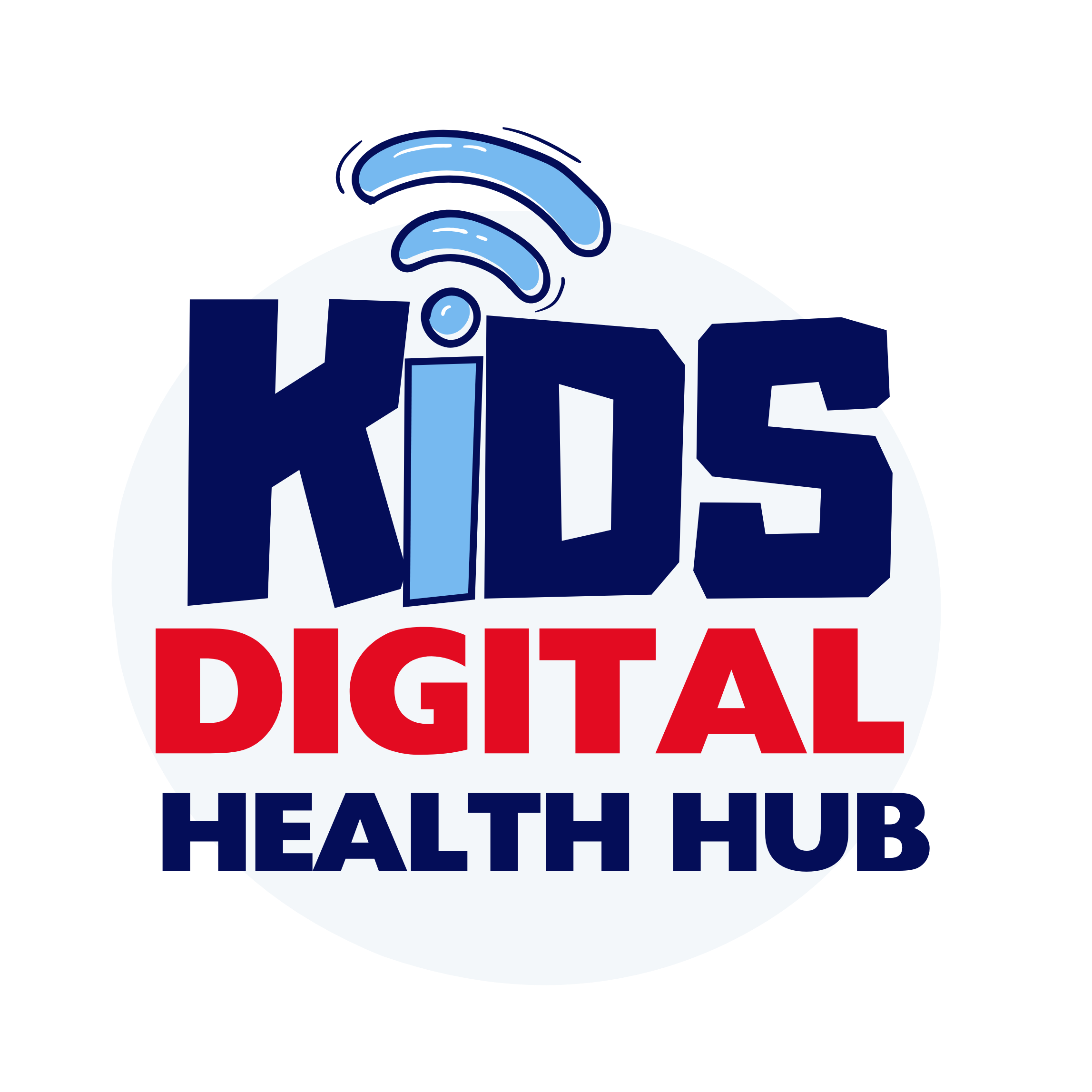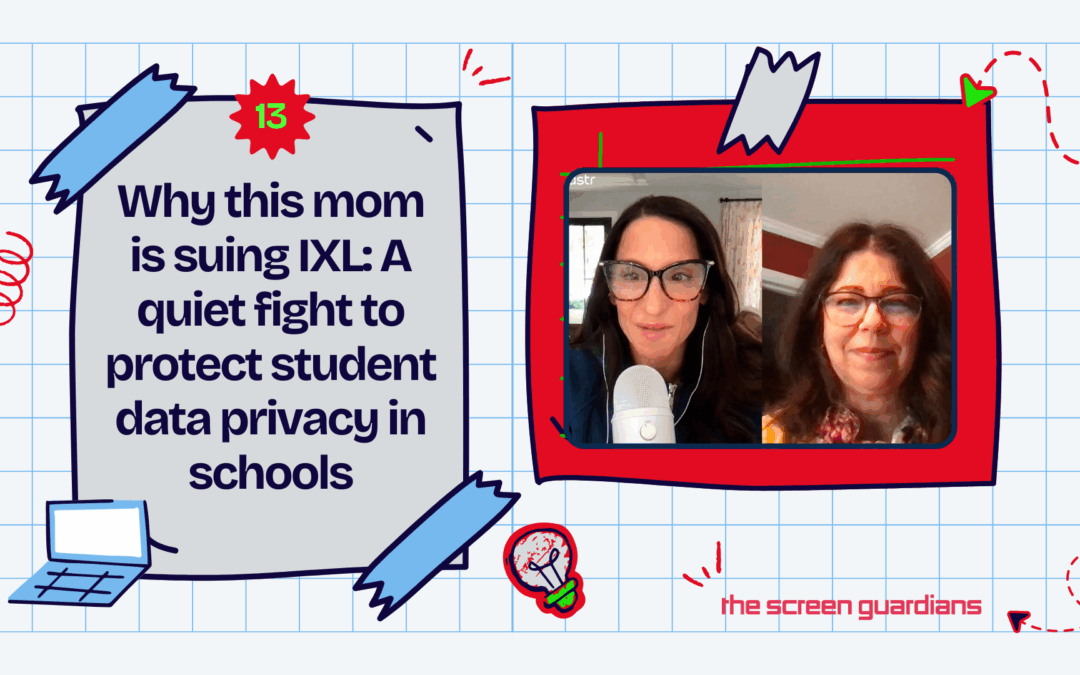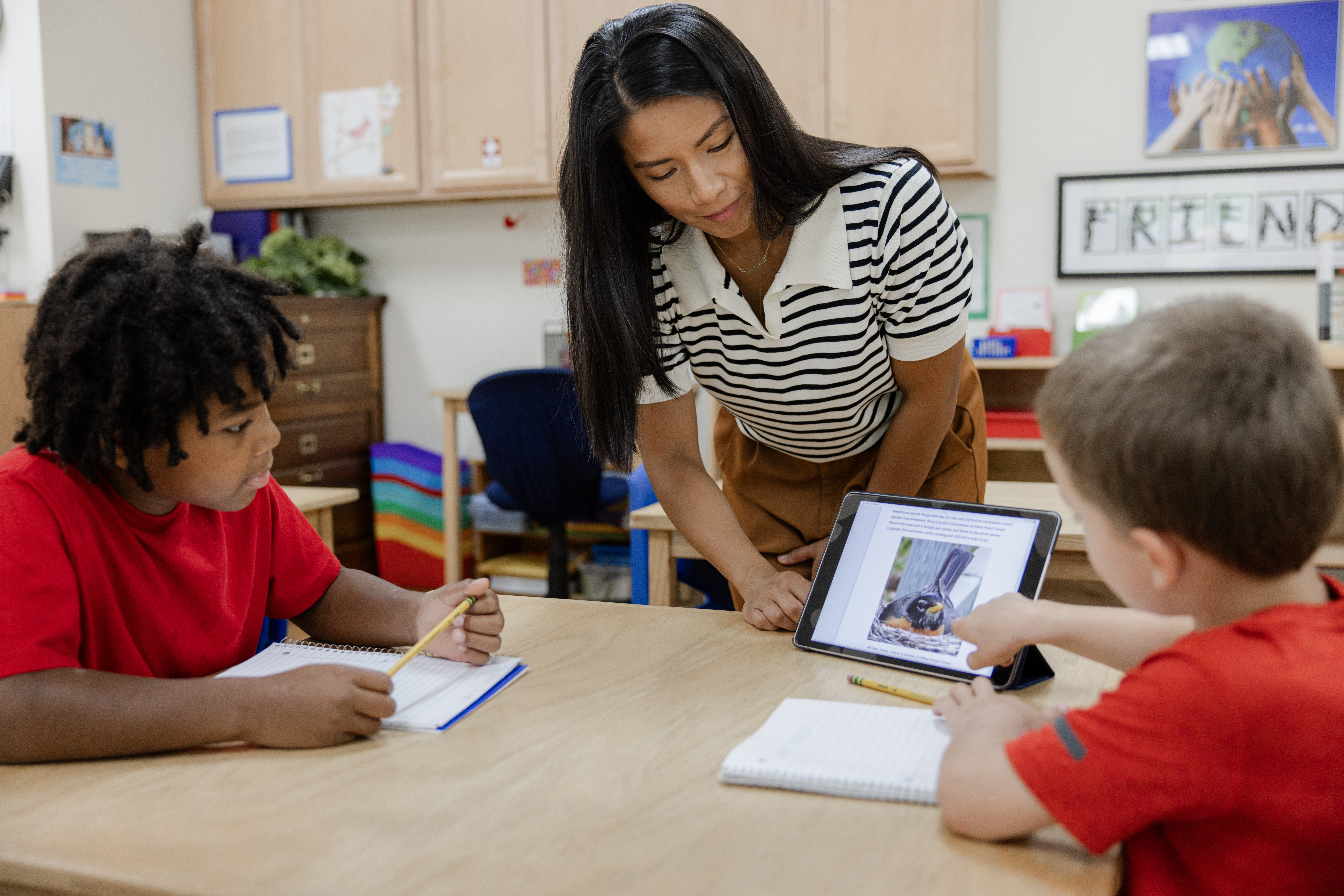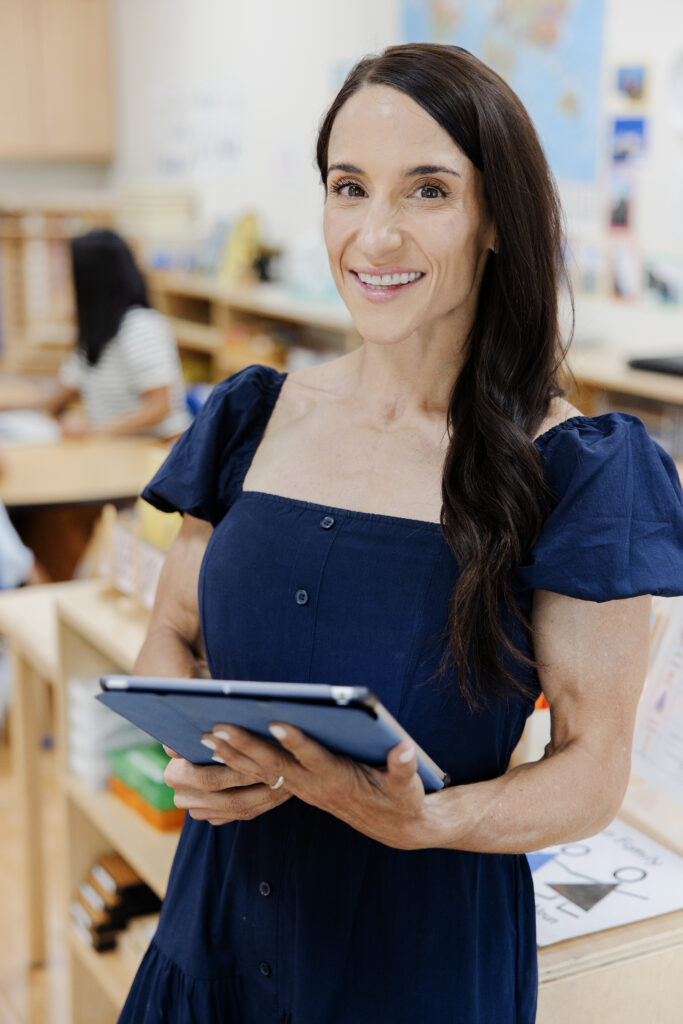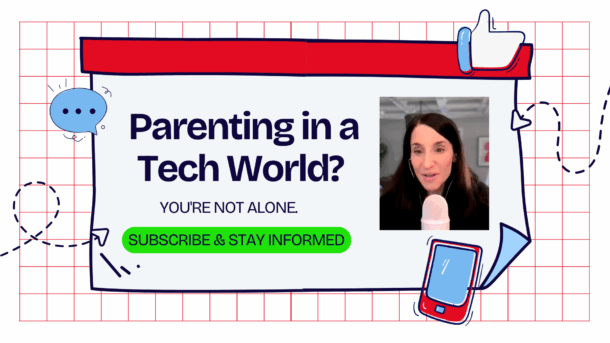There are moments in parenting when something small nudges at your attention—and then, without warning, that “small” thing becomes a defining shift. That’s what happened to Gretchen Shanahan in 2018.
She remembers it clearly—the way the questions started stacking up in her mind. Why are my kindergartners using iPads during indoor recess? How much screen time are they actually getting during the school day? Who’s counting?
At the time, she didn’t label herself a digital wellness advocate or a trailblazer.
She was simply a mom asking questions.
But questions can be catalytic. And Gretchen’s curiosity eventually led her to become one of the leading voices on parental digital wellness—founding Digitally Wise Consulting, speaking on stages, and currently standing in the midst of one of the most significant lawsuits calling for greater protections around student data privacy.
I sat down with Gretchen for a powerful conversation that moved between her personal choices, classroom culture, and the very real risks families face when children are immersed in technologies we don’t fully understand or regulate.
Table of Contents
Screens in Schools: What I Found
“I thought… surely they aren’t using iPads that much in kindergarten?”
Gretchen’s journey began—as many do—not with outrage, but with surprise. When her children were in early elementary school, their district had just rolled out a new one-to-one iPad program.
At first, she told herself what so many of us do: Teachers are busy. Surely recess won’t involve screens.
But it did.
Day after day, her kids came home saying, “We played on the iPad for recess again.” And soon, Gretchen realized she didn’t actually know how many minutes, hours, or patterns were forming behind the classroom doors.
So, like any parent trying to make sense of something that didn’t sit quite right, she asked questions. She met with teachers—veteran and kind-hearted ones. She approached the principal. But she quickly encountered resistance. At the time, the cultural messaging around technology in schools was downright relentless: Get on the train or get left behind.
“But I started thinking… left behind what, exactly?”
The slow unlearning and the quiet resistance
One thing I deeply admire about Gretchen’s story is that it didn’t erupt overnight. She didn’t pull the plug on everything and rip the iPads away in protest. She didn’t preach. What she did was slower, more intentional—she came home and looked inward first.
She reevaluated her own phone habits. She remembered how her iPhone had gradually become the last thing she saw each night and the first thing she touched each morning. And she took tangible steps to replace that pattern—getting an old-school sunrise alarm clock, using a paper planner again.
That’s where her philosophy really grew from: Start with yourself. Then look at your family.
And when it came to her kids, she didn’t just dictate rules. She built a family culture of ongoing dialogue and shared decision-making. Her children had no smartphones until the end of ninth grade, and even then, they got Gab phones—devices that allow calls and texts, but no internet browsing or apps.
No social media. No streaming in bedrooms. But also—no shame or fear-based tactics.
Instead, Gretchen talked. A lot. About commercials that glamorized alcohol. About AI bots acting like best friends. About peer pressure, loneliness, and identity. Her kids learned to spot manipulation not just from a lecture—but from lived, shared experience.
And as they grew? They thrived. They’re in honors classes, involved in sports, maintaining friendships. They’re not outliers—they’re teenagers learning to think critically in a culture where that’s increasingly rare.
But what about school? The Hidden Truth Behind EdTech Platforms
As intentional as Gretchen could be at home, school remained the hard part. Devices, platforms, programs—most parents assume they’re safe just because they’re in the classroom.
But Gretchen did what few do: she asked to see her kids’ iPads. And what she found was concerning. News apps with unfiltered headlines, library apps with adult content—all quietly preloaded without oversight or meaningful safety nets.
When schools pivoted to remote learning during the pandemic, things got worse. Platforms were rolled out quickly, and well-meaning districts unintentionally gave students access to everything—not by choice, but by default. Parents often didn’t know. Or they were too overwhelmed to push back.
But perhaps most alarming of all? The hidden data trails.
What is IXL?
IXL is an online learning platform used by schools around the world—particularly in the United States—to provide students with personalized practice in subjects like math, language arts, science, and more. It’s widely adopted; in fact, over 95 of the top 100 U.S. school districts use IXL in some capacity.

At first glance, IXL seems like a helpful tool. Students log in, practice skills tailored to their grade level, and receive instant feedback. Teachers can track progress. Parents are often told it’s interactive and effective. And in many ways, that’s true.
But here’s what many families don’t know:
Behind the lessons and dashboards, IXL—like many edtech platforms—is collecting detailed data on every student who uses it. That includes:
- user activity (how they answer, how long they pause),
- learning behavior patterns,
- and potentially even identifiable data tied to student profiles, depending on school implementation.
While the platform often claims this data is “de-identified,” meaning it’s not traced back to a specific name, digital privacy experts argue that with the right tools and cross-referencing, this information can still be linked to individual children—especially when combined with third-party tools and brokers.
For schools, IXL represents innovation and efficiency. For some parents—like Gretchen Shanahan—it represents something else: a serious and largely unseen breach of student privacy, and a wake-up call for greater transparency in educational technology.
The lawsuit: Shanahan v. IXL
Today, Gretchen stands at the frontline of a class action lawsuit against IXL, one of the most widely used educational platforms in the country.
The heart of the case is this: student data is being collected, tracked—even after active use has stopped—and sold to third-party data brokers. As technology expands in classrooms, the protections around student privacy have failed to keep up.
Gretchen puts it this way: “They are creating a digital dossier on our kids.”
Companies like IXL claim the data is “de-identified,” meaning it’s collected without directly naming the student. But when coupled with other identifiers and matched with enough touchpoints—many believe that student data can, in fact, be reassembled and used to target children with future messaging, manipulation, and monetization.
And here’s what’s critical: Parents are rarely told this is happening.
Gretchen believes it should not require a law degree to safely send your kid to school.
Her lawsuit challenges not only the practices of companies like IXL, but the systems within school districts that approve these platforms without transparent communication with families. At its core, the case is about consent, clarity, and child safety.
Read about the lawsuit here: IXL Data Privacy Litigation
FTC Files Amicus Brief Saying COPPA Can’t Force Parents Into Arbitration
What can parents do right now about Student Data Privacy?
Gretchen offer three gentle, clear takeaways for those of us navigating this terrain:
- Start where you are. And start at home.
Be curious about your own screen habits. Invite your children into conversations, not just rules. - Talk to your schools. Ask hard—but respectful—questions.
What platforms are they using? Who has access to your child’s data? Are there opt-out options? - Find community, but don’t wait for agreement to act.
If your boundaries feel different from others in your circle—that’s okay. As Gretchen said so simply: “Leaders go first.”
Alternatives to IXL in education
If your school uses IXL and you’re starting to feel uneasy—or if you’re an educator searching for tools that align more closely with student safety and well-being—you’re not alone. Many families, teachers, and administrators are asking important questions about digital responsibility, data transparency, and healthy screen engagement.
Choosing an alternative isn’t just about swapping one platform for another. It’s about realigning with your values: How do we support students’ learning while also protecting their privacy? How do we use tech without letting it use them?
Here are several screen-conscious or privacy-respecting alternatives that schools and homeschoolers alike are turning to:
⭐ 1. Paper-based & offline resources
Sometimes the most effective tools don’t require a login or a glowing screen.
- Evan-Moor offers skill-building workbooks by grade and subject.
- Brave Writer and The Good and the Beautiful support language development with thoughtful, offline materials.
- Many public libraries offer free printable practice pages or lend curated kits for math and reading support.
💬 When students put pencil to paper, they’re not just learning—they’re also protecting their attention span, eyes, and inner world.
💡 2. Privacy-conscious digital tools
If online platforms are necessary, some are more transparent about their data use than others.
- Khan Academy: A nonprofit, ad-free platform with robust academic support—and strong privacy protections.
- Zearn (for math): Used in many classrooms but with far fewer ads or gamified nudges compared to other tools. Always review settings and permissions.
- ReadWorks.org: Offers high-quality, leveled reading passages and comprehension activities—with optional offline printouts.
💬 Remember: not all digital tools are harmful. The key is in how they’re used—and what they ask for in return.
🛡️ 3. Open conversation as a tool
One powerful “alternative” to overused edtech isn’t a product at all—it’s dialogue.
Talk with your child’s teacher, counselor, or school board about:
- opting out of specific platforms (if allowed in your state),
- requesting paper-based assignments or reduced screen use,
- understanding what data is collected and how it’s used.
In many cases, educators want to work with families, but they aren’t always fully aware of what’s happening behind the platforms either. Change often begins with one kind, intentional question.
Finding your footing as a parent
You don’t have to be a tech expert or an attorney to make thoughtful choices for your child’s learning. All you need is enough curiosity to ask questions—and enough courage to push for what feels right.
There are other paths through education. There are other ways to support learning that don’t compromise privacy for performance.
What matters most is not picking the perfect platform—but staying rooted in the belief that your child deserves a safe, developmentally grounded, and human-centered learning experience.
Even in an algorithm-driven world, you still get to lead with values.
My reflection: Screen Time in Schools
Listening to Gretchen, I felt the quiet strength that comes from years of walking an uncomfortable but necessary path.
It reminded me that being digitally wise today takes more than good intentions. It takes courage. And it also takes compassion—for our kids, for our schools, and for ourselves, as we stumble through this shift in real time.
It’s not about fear. It’s about informed hope.
And as parents, educators, and community members, we have both the right—and the responsibility—to ask better questions and build bolder guardrails.
Our kids are watching. Not just what we say, but the choices we make.
Let’s make them slowly, thoughtfully, and together.
Want to learn more?
- Gretchen Shanahan’s work: digitallywiseconsulting.com
- Gab Wireless (screen-conscious phone option): gab.com
- Emily Cherkin – The Screen Time Consultant: thescreentimeconsultant.com
- Fairplay for Kids – advocacy: fairplayforkids.org
If your children have used IXL and you want to learn more about ongoing legal action, you can visit the EdTech Law Firm where the case is being tracked.
💬 Have questions or ideas stirred by this blog? I’d love to hear from you. What struggles or choices are you navigating in your family or school? Let’s keep the conversation going.
